This article was medically reviewed by Victor Catania, MD. Dr. Catania is a board certified Family Medicine Physician in Pennsylvania. He received his MD from the Medical University of the Americas in 2012 and completed his residency in Family Medicine at the Robert Packer Hospital. He is a member of the American Board of Family Medicine.
There are 9 references cited in this article, which can be found at the bottom of the page.
wikiHow marks an article as reader-approved once it receives enough positive feedback. In this case, 88% of readers who voted found the article helpful, earning it our reader-approved status.
This article has been viewed 239,274 times.
A hematoma is a collection of blood that has escaped a damaged blood vessel or vein. Unlike other bruises, it is usually accompanied by significant swelling. The severity of a hematoma depends entirely on its location and some hematomas may need to be medically drained or may take a long period of time to heal. You should get any hematomas suffered on your head or near your internal organs checked by a doctor right away.[1] Do not treat these types of hematomas at home. Hematomas found just under the skin (subdermal) on your arms and legs can be treated at home after evaluation from a healthcare provider to ensure no other complications have arisen.
Steps
Treating a Hematoma at Home
-
1Do R.I.C.E. R.I.C.E. stands for Rest, Ice, Compression, and Elevation. These steps can be used at home to treat hematoma on your arms and legs and should be practiced on a daily basis for the best results.[2]
- Try to apply R.I.C.E. as soon as you develop the hematoma for optimal recovery and healing.
-
2Rest the limb with the hematoma. Make sure you rest the affected area during the first 24–72 hours of developing the hematoma. This will prevent any further bleeding and allow the area to heal.[3]
- Some physicians recommend that you rest a lower limb that has hematoma, such as your leg, for at least 48 hours. The duration of the rest period is dependent on the extent of the hematoma.
Advertisement -
3Ice the area for 20 minutes, several times a day, for the first 48 hours. Apply an ice pack wrapped in a towel, or perform an ice massage on the affected limb. This will decrease the pain and swelling of the hematoma.[4]
- To apply an ice massage, freeze a plastic foam cup of water. Hold the cup and place a cloth or paper towel over the affected limb, then apply ice.
- Never apply ice or an ice pack directly to skin, as this increases risk for a thermal burn or frostbite.
- After the first 48 hours, you can use a heated compress, such as a heating pad or a very warm washcloth, two to three times a day, to help your body reabsorb the blood from the hematoma.
-
4Compress the hematoma to reduce any swelling. Use a compression wrap or a compressive elastic bandage over the hematoma until it appears less swollen. You can find compression wraps and compressive elastic bandages at your local drugstore or pharmacy.[5]
- You should maintain compression on the area for at least two to seven days. Make sure the compression bandage is on properly and it is snug, but not cutting off blood circulation to the limb.
- A wrap that cuts off circulation will trigger throbbing in the area or skin color changes such as becoming deeper purple or blanching entirely.
-
5Elevate the affected area. This will help to reduce the pain and swelling. Raise the affected limb above the level of your heart on a chair or a stack of pillows.[6]
-
6Take an over-the-counter pain reliever or anti-inflammatory medication. This medication will help with the pain and swelling you may experience as the hematoma heals.[7]
- Ibuprofen (Advil, Motrin) is a very effective pain reliever and anti-inflammatory medication. Follow the dosage instructions on the bottle and take no more than two pills at a time. Repeat this dosage every four to six hours.
- Naproxen sodium (Aleve) is another anti-inflammatory medication. You can take this medication every 12 hours as needed for pain and swelling.
- Acetaminophen (Tylenol) is an effective pain reliever that can be used to ease any discomfort or pain.
- If you have a bleeding disorder, avoid taking non-steroidal anti-inflammatory (NSAID) drugs, including aspirin, as these medications can interfere with blood platelets and prolong your bleeding.
-
7Wait a few months for the hematoma to subside. If you have a hematoma on your arm, leg, or hand, you should do diligent home treatment and be patient as the blood reabsorbs into your body. After a few months, the hematoma should fade on its own and the pain should subside.[8]
Seeking Medical Care
-
1Head to the nearest hospital if you suffer a hematoma on your head or your internal organs. Any injury to an area that isn't an arm or leg should be immediately evaluated due to risk for internal hematoma.[9]
- An acute subdural or epidural hemorrhage to your brain can develop over a period of minutes or hours.[10] Both occur around/in the brain, both occur with trauma, and both require immediate evaluation. If not promptly treated, they can lead to a severe brain injury and possibly death. Subdurals are often accompanied by a "thunderclap" headache.[11]
- It is also possible to develop chronic subdural hemorrhage. This type of hemorrhage can develop over a period of many days to many weeks and you may not notice any symptoms until some time after the hematoma develops. It is important that you get the hematoma on your head or internal organs checked by a doctor to rule out any serious complications.[12]
-
2Go to the nearest medical facility if the skin is broken on the hematoma. If the skin is broken on the hematoma, you may be at risk of infection. Your doctor will need to examine the hematoma and decide if it would be beneficial to drain the blood from the hematoma.[13]
- If you develop new, unexplained bruising, these could be a sign of another medical issue. Your doctor should examine the new bruises and determine what may be causing them to develop.
-
3See your doctor if your symptoms do not improve after two weeks. If an extremity hematoma does not improve despite diligent home treatment after two weeks, make an appointment to see your doctor. You should see reduced swelling and pain from the hematoma after two weeks of good home care. Your doctor will examine the hematoma and determine if there many be other medical issues that are slowing down the healing process.[14]
Things You'll Need
- Ice
- Compression bandage
- Over the counter anti-inflammatories
- Pillows
- Heating pad/warm washcloth
References
- ↑ https://www.drugs.com/cg/hematoma-aftercare-instructions.html
- ↑ https://www.uofmhealth.org/health-library/tw4354spec
- ↑ https://myhealth.alberta.ca/Health/aftercareinformation/pages/conditions.aspx?hwid=zx4360
- ↑ https://myhealth.alberta.ca/Health/aftercareinformation/pages/conditions.aspx?hwid=zx4360
- ↑ https://myhealth.alberta.ca/Health/aftercareinformation/pages/conditions.aspx?hwid=zx4360
- ↑ https://myhealth.alberta.ca/Health/aftercareinformation/pages/conditions.aspx?hwid=zx4360
- ↑ https://www.drugs.com/cg/hematoma-aftercare-instructions.html
- ↑ https://www.drugs.com/cg/hematoma-aftercare-instructions.html
- ↑ https://my.clevelandclinic.org/health/diseases/21183-subdural-hematoma
- ↑ https://www.mayoclinic.org/diseases-conditions/intracranial-hematoma/symptoms-causes/syc-20356145
- ↑ https://medlineplus.gov/ency/article/001412.htm
- ↑ https://medlineplus.gov/ency/article/000781.htm
- ↑ https://www.nhs.uk/conditions/subdural-haematoma/treatment/
- ↑ https://my.clevelandclinic.org/health/diseases/15235-bruises
About This Article
To heal a hematoma, rest your affected limb for the first 24-72 hours after developing the hematoma, depending on how severe it is. Also, during the first 48 hours, ice the area for 20 minutes several times a day to help reduce pain and swelling. Keep your limb wrapped with a compression bandage for a week to prevent swelling. When you're resting, elevate your affected limb above your heart using a chair or pillows to alleviate pain and swelling in the area. To learn how to tell when your hematoma requires medical attention, scroll down.
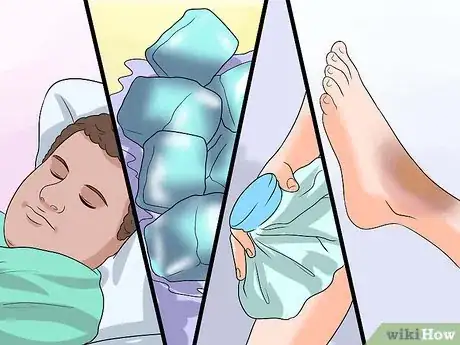

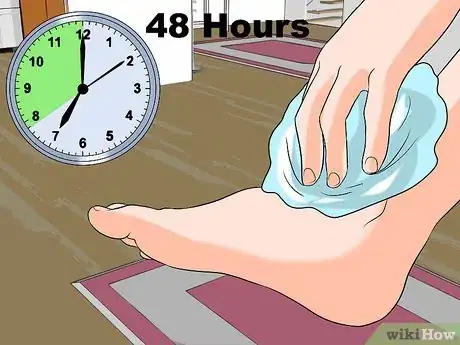
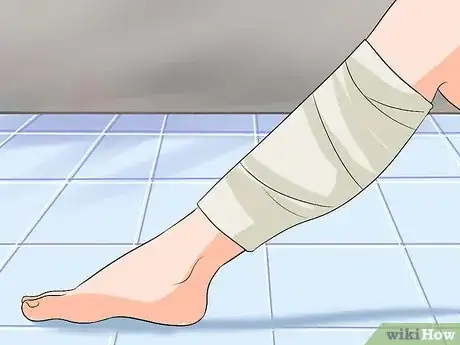
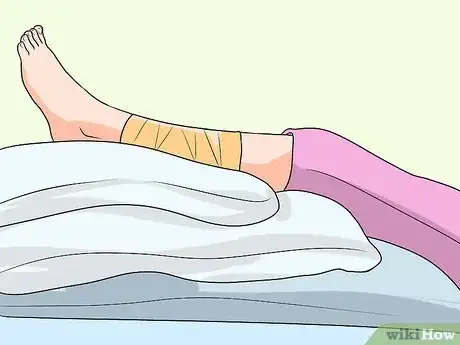

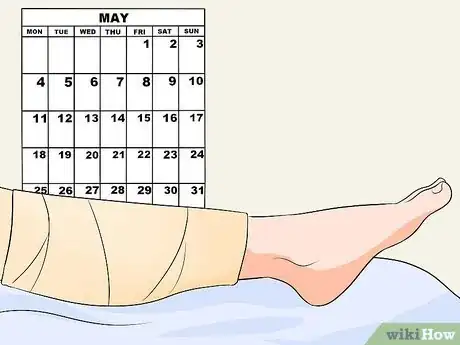

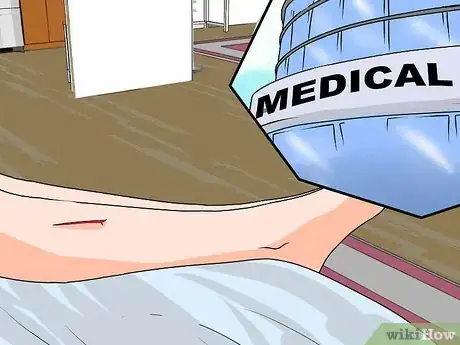
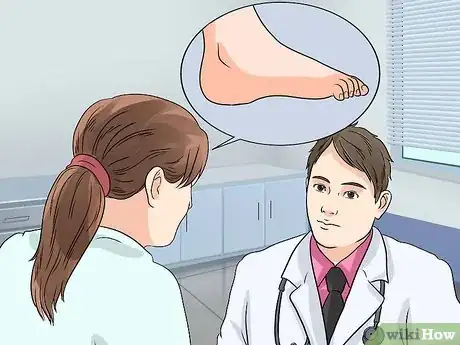
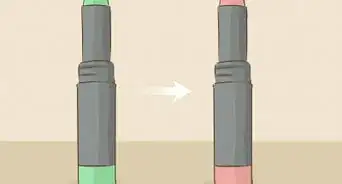




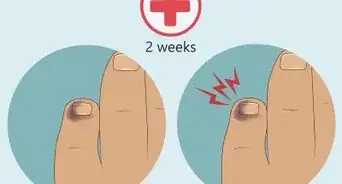





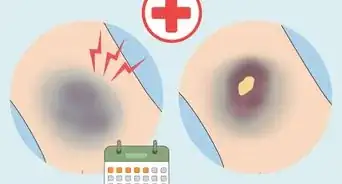




















































Medical Disclaimer
The content of this article is not intended to be a substitute for professional medical advice, examination, diagnosis, or treatment. You should always contact your doctor or other qualified healthcare professional before starting, changing, or stopping any kind of health treatment.
Read More...